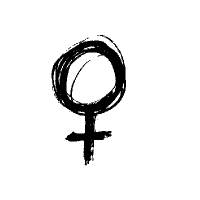Is Travel Literature Genre?
Transcript of a conference given at the Japan Touch (Lyon, 2 December 2017)
Good morning everyone,
My name is Carrie Speaking and I am doing some stands later on a Photo Expo called "Meian". But I'm mostly an autographer and freelance photographer. I mainly write about travel, but also about feminism, photography and LGBT rights.
So for 20 minutes, I suggest that you go together to London, the jungles of Congo and Mexico, the west coast of the United States, Iran, South America and Japan, to ask us this question together: Is travel literature gendered?
This is 2017. I give the floor to Leyla Giray Alyanak, journalist and American reporter living in Rhône-Alpes, author of the blog Women On The Road:
The travel literature written by women is much more than stories about places to go - it is the testimony of what it is like to be a woman facing a strange place." (translation: C. S.)

I now report on the words of Barbara Schaff, University Professor for Gender Studies in Literary Narratives, who spoke a month ago at a conference on women and travel literature in Berlin a month ago:
From the 19th century onwards, women entered the literary scene of the travel narrative for good. From then on, there are two styles: men go on an adventure, women go out to discover themselves; men have access to education and can be learned and later scientists; women have only a domestic and emotional education; men describe an environment they analyze; and women talk about the emotions they feel in an environment they discover. (summary: C. S.)

Let's go back a little bit. I finally give the floor to Virginia Woolf, in a fictional travel narrative written in 1915 entitled La Traversée des Apparences, where she expresses her opinion not through the mouth of her heroine, but through the mouth of a male character:
Just consider this: we are at the beginning of the 20th century, and until a few years ago no woman had come out of the shadows and said anything. This is what was happening in the background, all these thousands of years, this curious, silent, unrepresented life. Of course we're always writing about women - mistreating them, mocking them, idolizing them; but it never came from women themselves. I sincerely believe that we still do not have the slightest idea of how they live, how they feel, what they do, precisely. If you are a man, the only confidences you receive come from young women about their love affairs. But the lives of 40-year-old women, unmarried women, working women, women who run shops and raise children, women like your aunts or Mrs. Thornbury or Miss Allan - we don't know anything about them. It is the point of view of men that is represented, you see. Picture yourself a train: fifteen cars, all designed for men who want to smoke. Doesn't that boil your blood? If I were a woman, I'd blow someone's brains out.
Don't you guys make a lot of fun of us? Don't you think this whole thing is just a complete fraud? You, I mean you. How does that strike you?" (translation: C. S.)
What Virginia Woolf here means is that public space was only told at the time through the eyes of men.
What Virginal Woolf means more generally, in the context of her heroine's fictional journey, is that women's view of the public space is different from that of men, because their whole lives are different.
However, it turns out that the very principle of a travel narrative is to report things that happened in the public space. We travel differently in the public space if we are a man or a woman; and so, the narrative we deliver has every chance of being different, both in content and form.